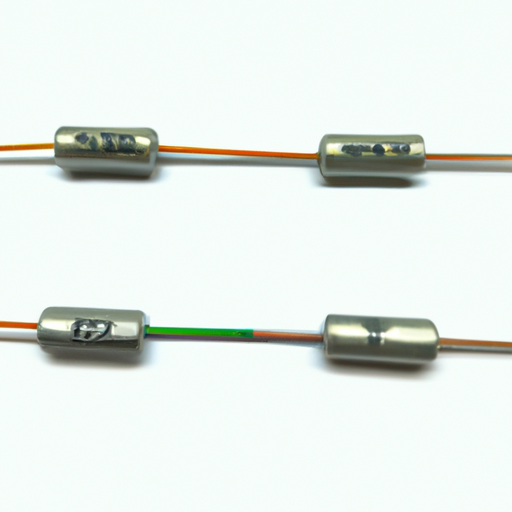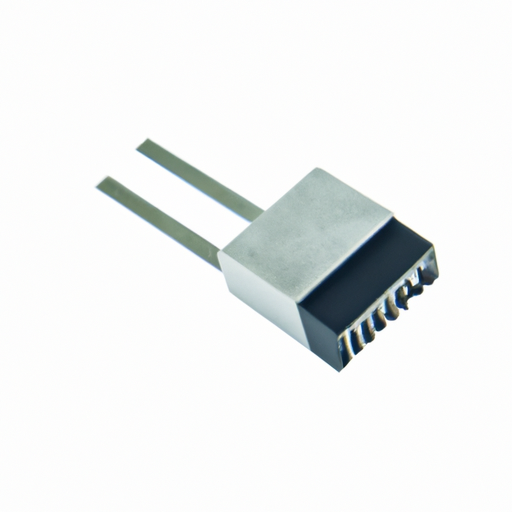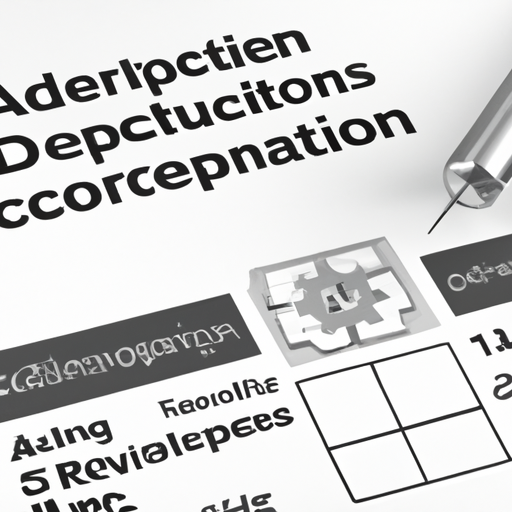The latest resistor L specifications
The Latest Resistor L Specifications
I. Introduction
In the world of electronics, resistors play a crucial role in controlling the flow of electric current. Among the various types of resistors, Resistor L has gained significant attention due to its unique specifications and applications. This article aims to provide an overview of the latest specifications and advancements in Resistor L technology, highlighting its importance in modern electronic circuits.
II. Overview of Resistor L
A. What is Resistor L?
Resistor L refers to a specific category of resistors characterized by their linear resistance properties. Unlike other resistors that may exhibit non-linear behavior, Resistor L maintains a consistent resistance value across a range of voltages and currents. This stability makes it an essential component in various electronic applications.
1. Types of Resistor L
Resistor L can be categorized into several types, including fixed and variable resistors. Fixed Resistor L has a predetermined resistance value, making it suitable for applications where precise resistance is required. On the other hand, Variable Resistor L allows for adjustable resistance, providing flexibility in circuit design.
B. Historical Context and Evolution of Resistor L
The development of Resistor L can be traced back to the early days of electronics. Initially, resistors were simple carbon-based components, but as technology advanced, so did the materials and designs used in their construction. The evolution of Resistor L has been marked by significant technological advancements, leading to improved performance and reliability.
III. Key Specifications of Resistor L
Understanding the key specifications of Resistor L is essential for engineers and designers when selecting the right component for their applications.
A. Resistance Value
The resistance value of Resistor L is a critical specification that determines how much current will flow through it at a given voltage. Resistor L is available in a wide range of resistance values, typically measured in ohms (Ω). The choice of resistance value is crucial in circuit design, as it directly affects the performance and functionality of the electronic device.
B. Tolerance
Tolerance refers to the allowable deviation from the specified resistance value. It is an essential specification that indicates the precision of the resistor. Common tolerance levels for Resistor L include ±1%, ±5%, and ±10%. A lower tolerance level signifies a more precise resistor, which is vital in applications requiring high accuracy.
C. Power Rating
The power rating of Resistor L indicates the maximum amount of power it can dissipate without overheating. This specification is crucial for ensuring the reliability and longevity of the resistor in a circuit. Typical power ratings for Resistor L range from 1/8 watt to several watts, depending on the application.
D. Temperature Coefficient
The temperature coefficient measures how much the resistance value changes with temperature variations. A low temperature coefficient is desirable, as it indicates that the resistor will maintain its resistance value across a range of temperatures. Typical temperature coefficients for Resistor L are expressed in parts per million per degree Celsius (ppm/°C).
E. Voltage Rating
The voltage rating of Resistor L indicates the maximum voltage that can be applied across the resistor without causing breakdown or failure. This specification is vital in applications where high voltages are present. Common voltage ratings for Resistor L can range from a few volts to several hundred volts.
IV. Latest Advancements in Resistor L Technology
The field of Resistor L technology has seen numerous advancements in recent years, driven by the demand for higher performance and efficiency in electronic devices.
A. Materials Used
The materials used in the construction of Resistor L have evolved significantly. Traditional carbon and metal film resistors are now complemented by advanced materials such as thin-film and thick-film technologies. These innovations have led to improved performance, stability, and reliability in various applications.
B. Manufacturing Techniques
Advancements in manufacturing techniques have also played a crucial role in the development of Resistor L. Automation and precision engineering have enabled the production of resistors with tighter tolerances and better performance characteristics. These improvements have resulted in higher-quality components that meet the demands of modern electronics.
C. Miniaturization Trends
As electronic devices continue to shrink in size, the trend toward miniaturization has become increasingly important. Miniaturized Resistor L designs are now available, allowing for more compact circuit layouts without sacrificing performance. This trend is particularly relevant in consumer electronics, where space is at a premium.
D. Environmental Considerations
With growing awareness of environmental issues, manufacturers are increasingly focusing on eco-friendly materials and processes in the production of Resistor L. Compliance with environmental regulations is becoming a standard practice, ensuring that resistors are not only efficient but also sustainable.
V. Applications of Resistor L
Resistor L finds applications across various industries, showcasing its versatility and importance in modern electronics.
A. Consumer Electronics
In consumer electronics, Resistor L plays a vital role in devices such as smartphones, laptops, and televisions. It helps regulate current flow, ensuring the proper functioning of circuits and enhancing the overall performance of these devices.
B. Industrial Applications
In industrial settings, Resistor L is used in machinery and automation systems. It helps control motor speeds, manage power distribution, and ensure the safe operation of equipment, making it an essential component in industrial electronics.
C. Automotive Industry
The automotive industry relies heavily on Resistor L for vehicle electronics. From controlling engine functions to managing infotainment systems, Resistor L ensures the reliability and efficiency of various electronic components in modern vehicles.
D. Telecommunications
In telecommunications, Resistor L is crucial for communication devices and infrastructure. It helps maintain signal integrity and manage power levels, ensuring reliable communication in an increasingly connected world.
VI. Challenges and Considerations
Despite its many advantages, the use of Resistor L also comes with challenges that engineers and designers must consider.
A. Performance Limitations
Factors such as temperature, humidity, and voltage can affect the performance of Resistor L. Understanding these limitations is essential for ensuring the reliability of electronic circuits.
B. Market Trends
The demand for Resistor L can fluctuate based on market trends, impacting production and availability. Staying informed about these trends is crucial for manufacturers and suppliers in the industry.
C. Competition and Innovation
The Resistor L market is competitive, with numerous players vying for market share. Continuous innovation is essential for companies to stay relevant and meet the evolving needs of customers.
VII. Conclusion
In summary, Resistor L is a vital component in modern electronics, with specifications that significantly impact circuit design and performance. As technology continues to advance, staying updated with the latest specifications and innovations in Resistor L is essential for engineers and designers. The future of Resistor L technology looks promising, with ongoing developments in materials, manufacturing techniques, and environmental considerations paving the way for even greater advancements.
VIII. References
For further reading and in-depth understanding of Resistor L technology, consider exploring the following sources:
1. "Electronic Components: A Complete Reference for Engineers" by John Doe
2. "Resistor Technology: Principles and Applications" by Jane Smith
3. Industry reports from the International Electrotechnical Commission (IEC)
4. Technical papers from IEEE Xplore on advancements in resistor technology
By keeping abreast of the latest developments in Resistor L specifications, professionals in the electronics field can ensure they are making informed decisions that enhance the performance and reliability of their designs.






